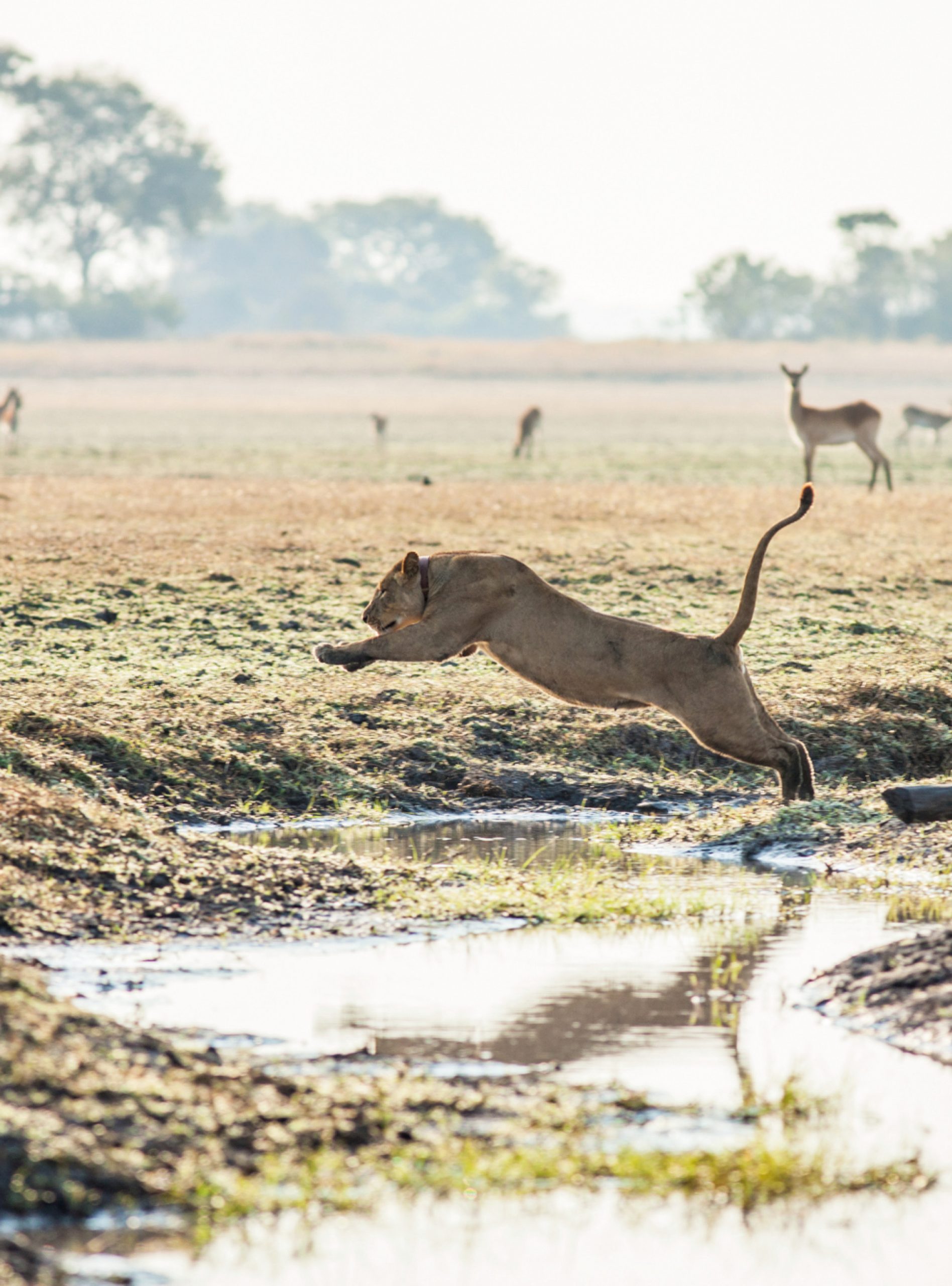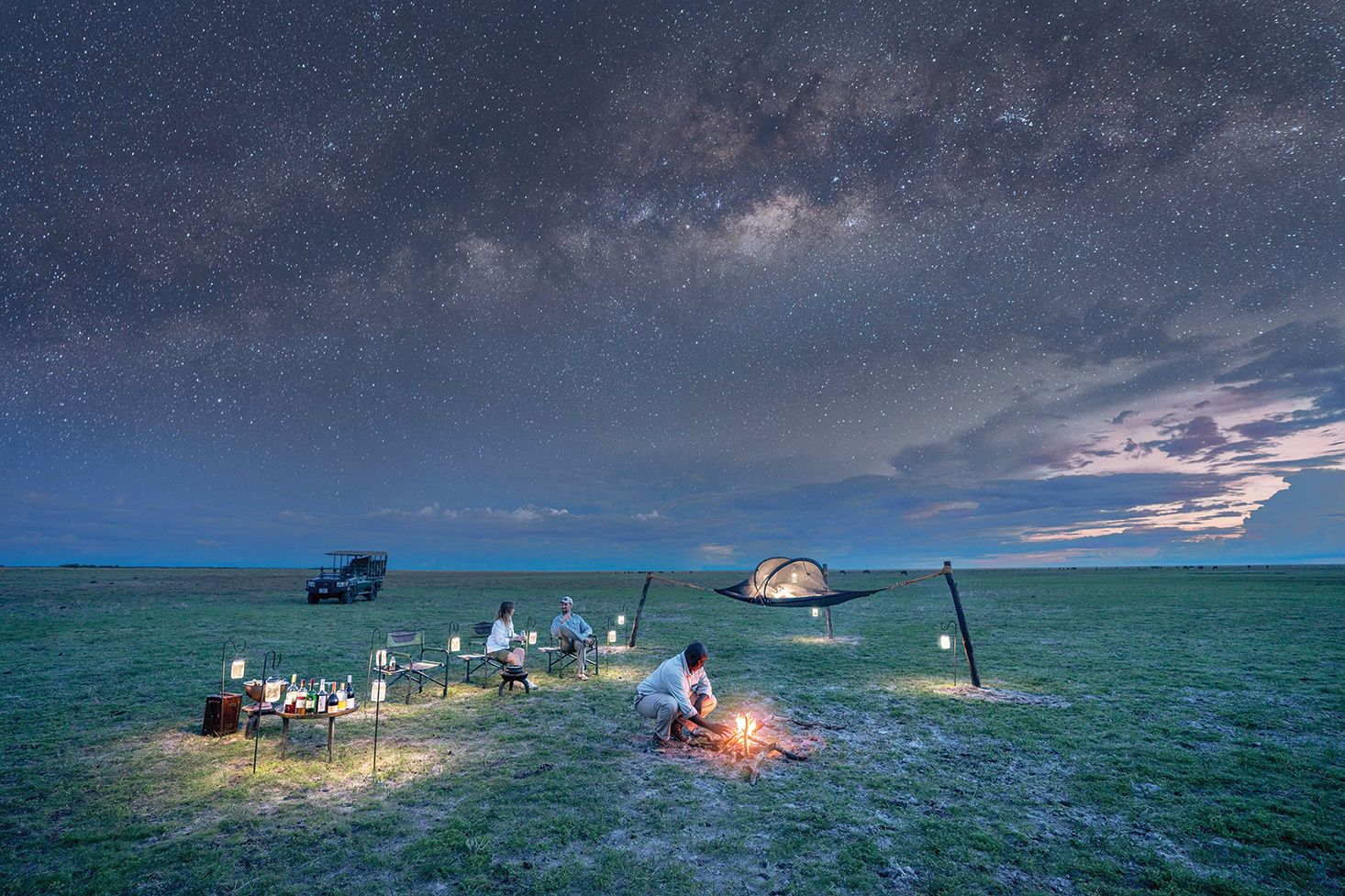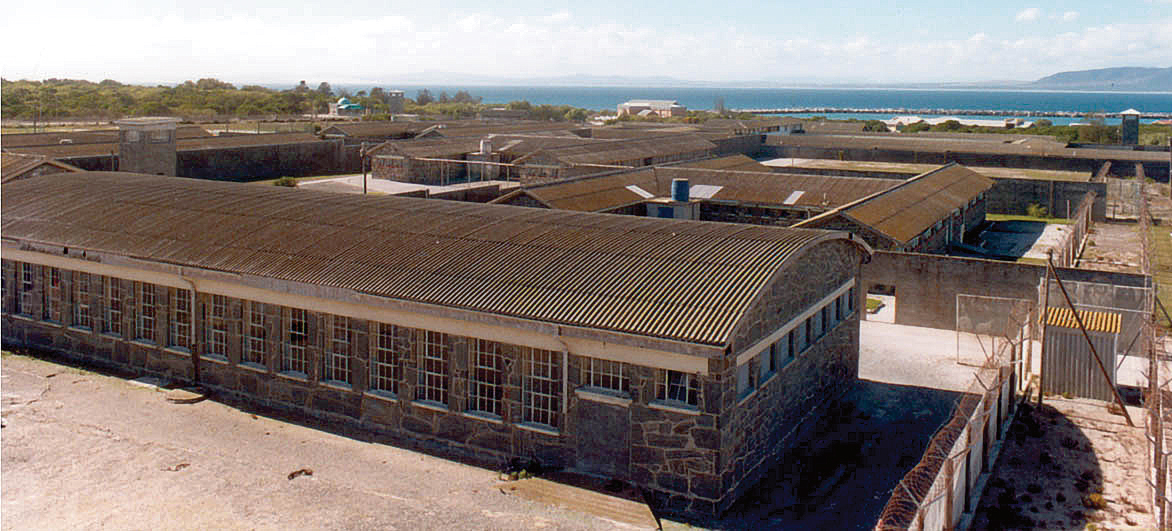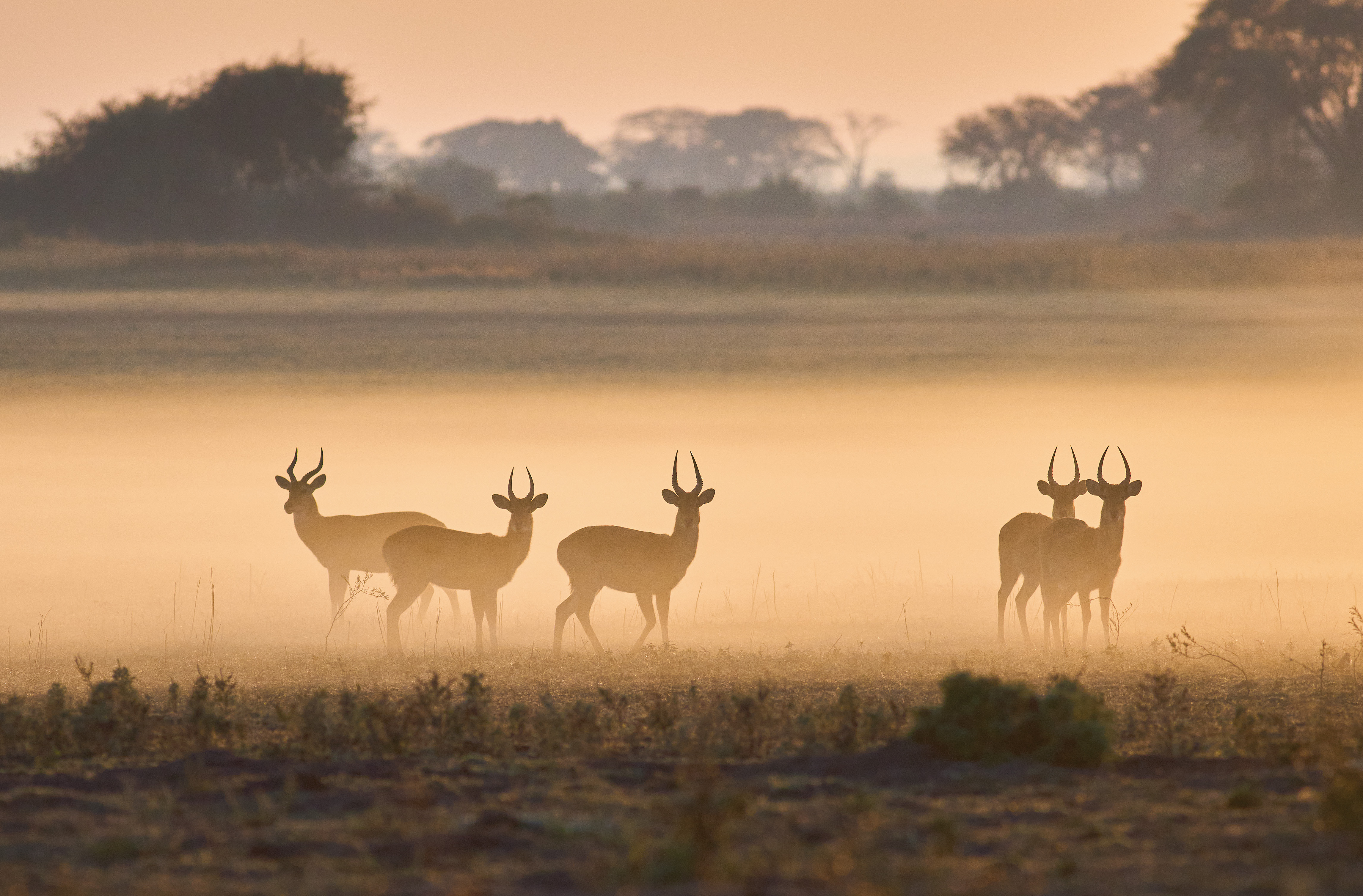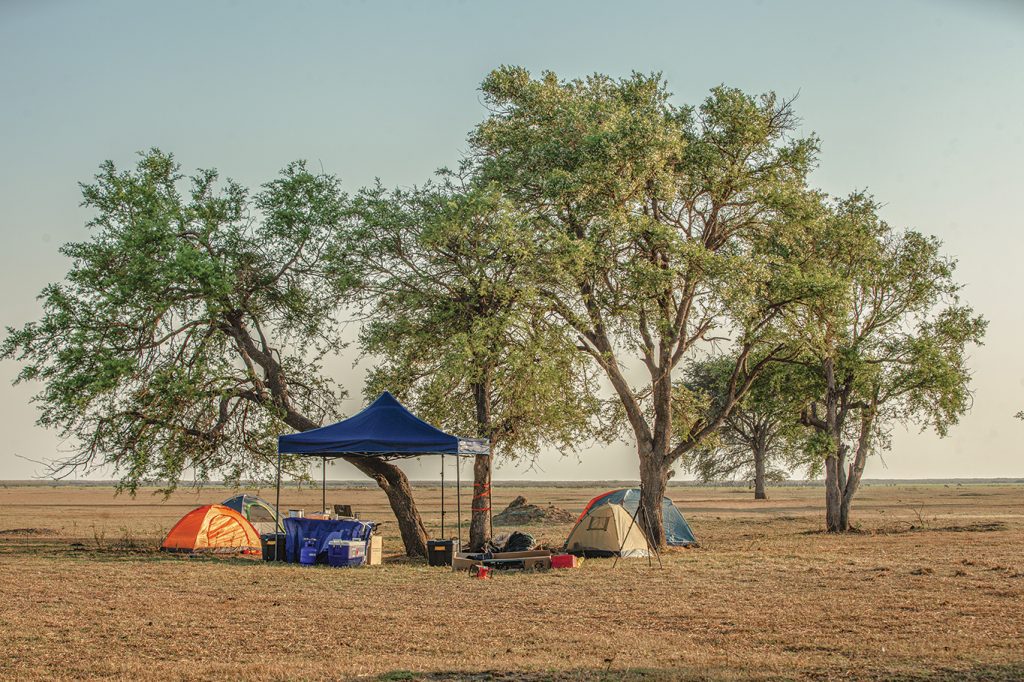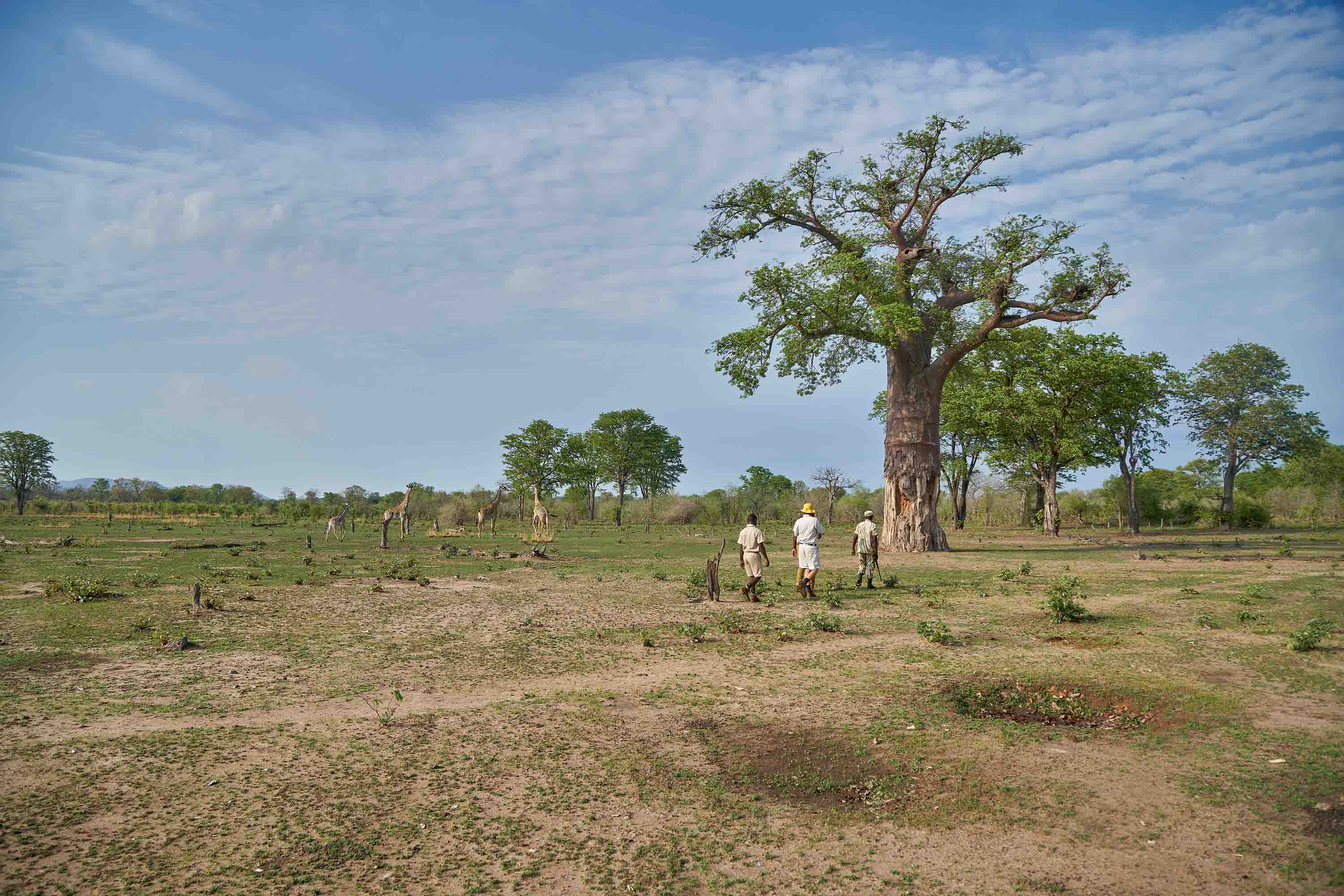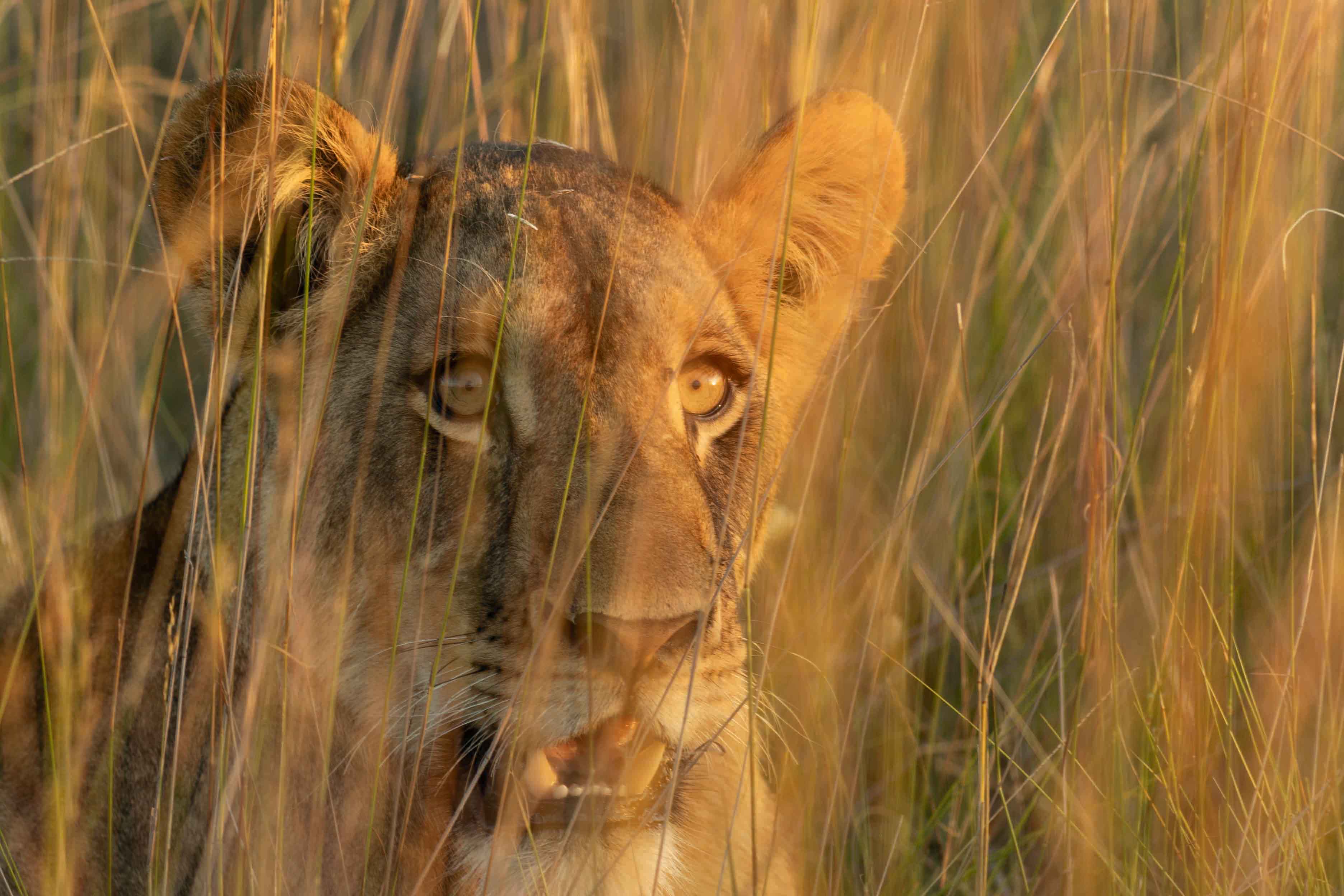Located in one of the continent’s largest national parks, the Busanga Plains constitute an area of over 700 km2. Secluded and teeming with life and spectacular scenery, it is one of the best places on the continent to view large predators. It is also home to the most experienced guides in Kafue National Park.
I first heard of Idos Mulenga from a colleague of mine. He described his guiding skills as almost mystical. “He can accurately estimate the distance of a kill with pinpoint accuracy just by listening to a puku’s cry,” he said, something I immediately brushed off as an exaggeration. “He is a legend on the plains. You should give him a call and plan a trip there,” he continued.
I mulled over the thought for a couple of nights before calling him. The first thing that struck me was his commanding voice which played true to my friend’s description. With the initial introduction over, he agreed to take me and Lizu, the designated photographer, for two nights. I was excited!

I like to imagine that van Gogh wouldn’t have conjured up a scene like the one before us even after his last drink of absinthe
We left Lusaka early morning to avoid city traffic and slow-moving trucks. The 385-kilometre journey to Kasonso Busanga Camp took around seven hours. The road is tarred until the hook bridge where the park gate stands, the track thereon, not at all.
It is not particularly easy to get to; the tight turns, potholes, protruding branches, ridges, and close animal encounters will wane your patience, and if you are anything like me, your concern over the state of your vehicle. I just wanted to get there! The more distance we covered, the fewer trees we saw, and the fewer tsetse flies attempted to high-jack our car, a good sign that we were on the correct route.
We hit the open plains; the tree line ahead was a distant shadow, and the sky touched the land in every direction. The undulating grass on either side of the track contained pockets of pukus and buffaloes. A further 12 kilometres in, and we arrived at our destination.

Kasonso Busanga Camp lay isolated on an island smack in the middle of the plains. At camp, Newton Mulenga, Idos’s pride and joy, greeted us. After a brief discussion and a complimentary drink, he showed us to our chalets, where we unpacked and freshened up.
As we eagerly waited for our afternoon drive in the thatched gazebo in front of the room overlooking the plains, a tall figure approached, prominent in stature and walking with purpose. His presence commanded respect. Confident he was Idos, I immediately shook his hand. “Welcome to Kasonso, my name is Idos, and they call me the king of Busanga, and he, the prince,” humouredly said Idos, pointing at his son Newton who accompanied him. “I will be the one taking you out on your first two drives; I will introduce you to the plains and show you some special sights. Newton will take over from there,” he continued. A suggestion we undoubtedly accepted.

With Idos at the helm, we commenced our first game drive, getting acquainted with the different animal species that inhabit the plains; we explored the pools of water populated by the semi-aquatic bird species and many oversized hippos cooling off. We see countless lechwes and pukus and spot several fish eagles atop leafless trees overlooking watering holes waiting to strike at unsuspecting fish.
In the sea of mist, the dulled sun slowly took centre stage, piercing through the gaps and casting a reddish-orange hue.
Busanga’s unique terrain allows easy vehicle access from June to about mid-November (depending on the rains), allowing you to be close to the animals. The plains host large prey populations such as lechwe, puku and roan antelope, making it the perfect hunting ground for large prey. The sheer abundance of which owed to the nutrient-rich grassy flood plains.

During our drive, we meet guides from other lodges taking guests on game drives, who, upon seeing Idos, proceed to stop and greet him. It was evident that he was revered. Idos’s knowledge, hard work, and kind nature led other colleagues and peers to affectionately call him “the king of Busanga,” a title I was eager to explore.
When sunset approached, we stopped for the ritualistic sundowner, the perfect opportunity to learn about our host. Idos explained that he spent most of his childhood in and around the Kafue National Park, where he fuelled his passion for the bush. He was handpicked from his home village of Lunga at age 21 by a gentleman called Ed Smythe, who took it upon himself to train and teach him everything there is to know about guiding. Idos quickly rose amongst the ranks to become Chief Guide while working for the different lodges operating on the Busanga Plains.

Three years ago, he applied for the guiding position at Northern Kafue Safaris; having 30 years of experience working on the plains and being a celebrity in these parts, he was immediately hired. Under his tenure, he helped start two other lodges under the brand, including Kasonso Busanga Camp.
The owners of Northern Kafue Safaris were thoroughly impressed with Idos’s work ethic, experience and passion that two years later, he was given a stake in the company. Idos, now a shareholder and director, helps manage the two other lodges for his company. A genuinely awe-inspiring feat.
After passing a good portion of the time listening to Idos’s stories, we head back. As we approached the lodge, we encountered two young male lions. Idos explained that the two were attempting to push out the old dominant male, Scarface. An endeavour two years in the making, every attempt inching successfully closer for the pair, who, for now, had driven him to the park’s north side.

Early next morning, primed for a more advanced experience, we ask Idos to show us what Busanga is known for; the big cats and the early morning hunts. Idos obliges with, “I am sure we can find some”.
In the distance, Idos spotted a jackal who appeared to look at a specific part of the bush and said, “something is there”. No sooner than he said that, a male leopard emerged, seemingly annoyed by the jackal’s irritating barks. It rushed out of the bushes and ran across the plain, undoubtedly displeased with the pesky intruder. We spent an hour watching the scene unfold; the jackal, relentless in his pursuit, chased the leopard out of every bush he used to conceal himself. I was hoping that a fight would ensue between the two. However, I was told that was not a common occurrence. The side-striped jackals typically attempt to steal predator kills, warning nearby animals of their presence in the process. Feeling bad for the leopard, we returned to the lodge to get some much-needed rest.
Their passion for Busanga was evident, and it was that which fuelled them daily.
On our afternoon drive with Newton, we successfully found the same two lions we had seen the night before. They were lying beneath the tree shade, where we patiently waited for them to make a move, but with sunset approaching, we opted to find a scenic spot to have our sundowners and, of course, a chance to hear about Newton’s life.
The spot Newton chose was incredibly picturesque. I like to imagine that van Gogh wouldn’t have conjured up a scene like the one before us even after his last drink of absinthe; two hippos in a pool of water not far in the distance with the pale sun setting perfectly overhead. We took a few photos and huddled up to listen to Newton’s story.

Newton’s interest in the bush was evident at an early age. Growing up, his father would tell him stories about the sightings and hunts he witnessed during game drives. Newton would feel a general sense of what the kids nowadays call “FOMO” (the fear of missing out). He would spend most of his days dreaming about going to the bush and following in his father’s footsteps. The true definition of a passion passed on.
Newton, 32, an expert guide, started his training by working at several lodges around Zambia and now has over 14 years of guiding experience, most of them spent on the plains. Newton, also Kasonso Camp manager, spends considerable time indulging guests’ special requests to take them out on game drives.
The following morning, we were to embark on our last morning drive, and what a memorable drive it would turn out to be. We woke up to a blanket of mist covering the entirety of the plains. The cold air, pure and crisp, effortlessly pierced through all four layers I had on. The hot water bottle on my lap made little difference. The more we drove, the colder I got. I was warned about the plains’ morning temperatures and had no one to blame except myself. I should have been better prepared.

In the sea of mist, the dulled sun slowly took centre stage, piercing through the gaps and casting a reddish-orange hue. Beneath it, silhouettes of lechwe emerged, peacefully grazing on the moist grass. A sight to behold, almost unreal. A kilometre ahead, we spotted a herd of elephants making their morning run to one of the islands, preparing to find cover from the midday sun.
Moments later, radio silence broke. We hear of two lionesses basking in the sun, warming up for a potential hunt. Excitement! We rushed to the scene to find the lionesses relaxing and frolicking on the grass. Newton skilfully navigated the water-logged trenches, following the lionesses’ every move, anticipating the hunt. But, to our disappointment, the lionesses were merely interested in socialising.
Having crossed a vast distance following the lionesses, we decide to extend our drive and continue heading north to find the legendary Scarface. An attempt that would later prove futile but pay dividends upon our return.
As we made our way to the lodge, we encountered a crocodile with a small puku in its mouth, an odd sight, as crocs usually launch attacks under the cover of the murky water. “The puku must have gotten a little close for comfort, and the croc took advantage,” reckoned Newton. A few kilometres further, two lechwes locked horns in an attempt to assert their dominance. We watch the fight unfold and end the perfect drive.

At night, as I sat around the fire in the boma, looking up at the stars blanketing the night sky, I found myself thinking about the perfect title for this trip; perhaps I could call it ‘Lechwes in the Mist’ or ‘The Land of Giants.’ I kept pondering about what would capture the essence of this land. It only became apparent when I thought about the reason that took me there, Idos.
After all, his and Newton’s ability to track and know where the animals would be, made our trip successful. Their knowledge of the flat terrain and structured approach to documenting visiting animals helps them stay informed about their next move. Their conversations primarily revolved around what sightings they saw that day. Their passion for Busanga was evident, and it was that which fuelled them daily.

If you are in the market for getting dumbstruck, I can wholeheartedly and unequivocally recommend the Busanga Plains. Having visited many parks across Zambia over the decade, it was Busanga that showed me sights I had never seen and which gave me memories that would last a lifetime. And I owe it all to the king of Busanga.
